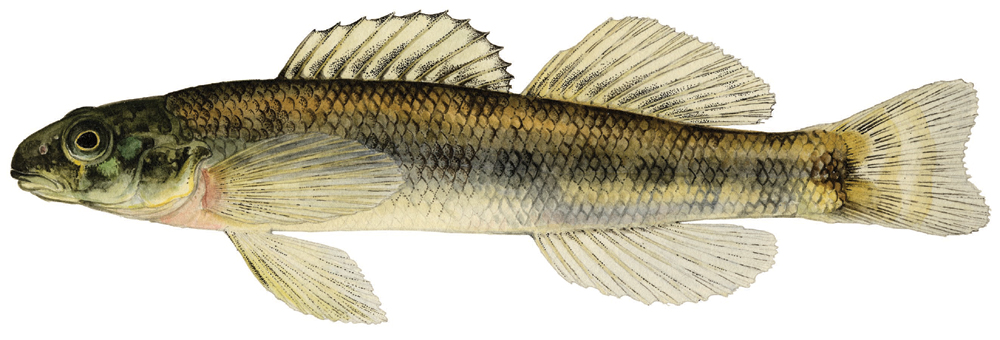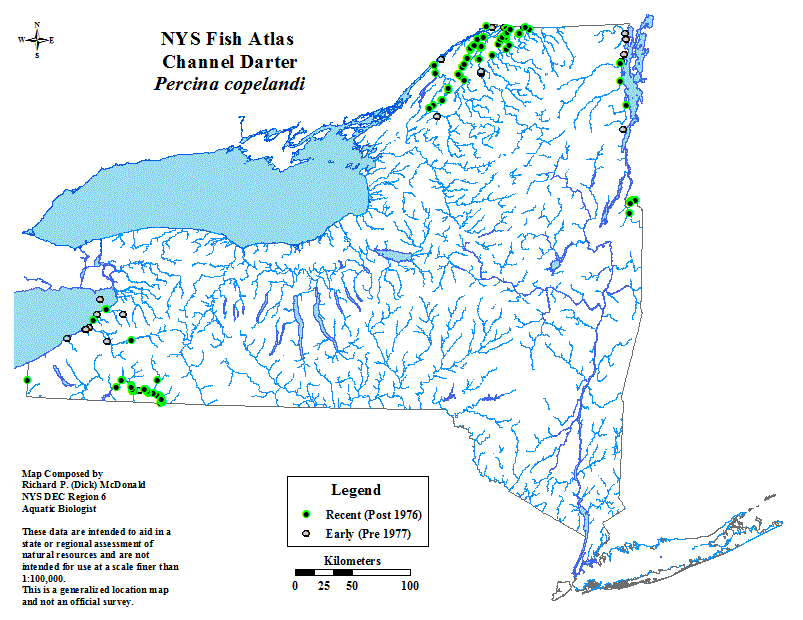
Channel Darter (Percina copelandi)
The channel darter occurs from the Tennessee River, the Ohio River system and Lakes Huron, Erie, and Ontario to the St. Lawrence River and Lake Champlain.
The channel darter is essentially a bottom-dwelling, lake or large-stream species, where it is most common over sandy or gravelly shoals off beaches. Apparently, it stays in deeper water during the day and moves into shallows at night. It spawns in the lower reaches of streams.
In the Cheboygan River, in the northern part of the Lower Peninsula of Michigan, channel darter spawning habits were studied below a dam where the water was 18 inches to 5 feet deep. Most of the spawning took place where the water was 2 to 3 feet deep and there was a swift current (1.4 feet per second at the surface and 0.95 feet per second near the bottom). Spawning took place 9-23 July, when the temperature was between 69 and 72 F. Males established territories behind rocks about 4 inches in diameter and larger, defending them against other male channel darters but not against logperch.
Usually, males did not stray more than 3 or 4 feet from the territories and then only for brief periods. Receptive females entered the territories and were mounted by the male. The pair vibrated together vigorously in the gravel below or between the rocks. Four to ten eggs were laid during each spawning episode. The eggs were slightly adhesive, demersal, somewhat flattened, with an average diameter of 1.4 mm. There was considerable variation in size. The eggs were mostly transparent with an orange-colored oil droplet.
Darters have been found to eat chironomids, dominated by caddisfly larvae. Midge larvae and mayfly larvae, as well as algae and bottom detritus have also been found in the stomachs of channel darters from the Bass Islands in Lake Erie.
Distribution of channel darters in NY state.
An image of the channel darter is also available for download.
The above species description was taken out of "The Inland Fishes of New York State" by C. Lavett Smith, published by the New York State Department of Environmental Conservation, 1985.
